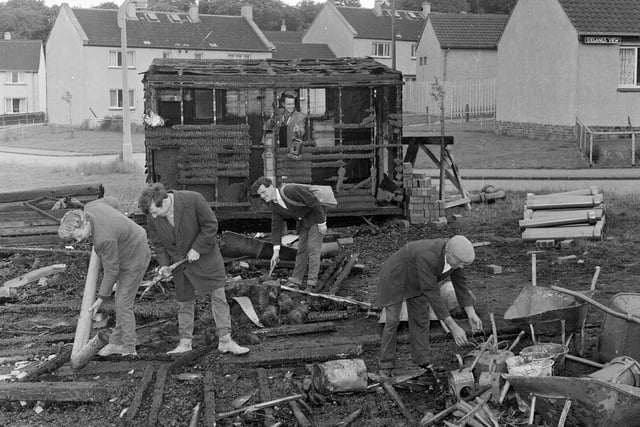The suburb gets its name from an old unit of land measurement used by farmers – with eight oxgangs in a ploughgate, and four ploughgates in a dabhach.
It remained an area of countryside left largely untouched by developers until the early 1950s, when it became the site of large public housing schemes consisting of bungalows and high rise tower blocks.
The majority of houses were originally council-owned but the ‘right to buy’ scheme introduced in the 1980s meant many renters became owners, with fewer than 700 homes now under local authority ownership.
There are three churches in the area – a Church of Scotland, a Scottish Episcopal Church and St Mark's Roman Catholic Church – while children attend Pentland Primary, which was recently created by merging Comiston Primary and Hunters Tryst Primary.
Residents campaigned for years to remove the Oxgang high rise flats, which the council agreed to do in 20023.
The Capelaw Court tower block was demolished in April 2005 to make way for new housing, with the other two buildings – Caerketton Court and Allermuir Court – following a year later.
Here are 20 pictures to take you back to the area over half a century ago.
Read more:
Edinburgh's Morningside: These 28 pictures from the 1950s and 1960s show the fascinating past of the residential neighbourhood
A message from the Editor:
Thank you for reading this article. We're more reliant on your support than ever as the shift in consumer habits brought about by coronavirus impacts our advertisers.
If you haven't already, please consider supporting our trusted, fact-checked journalism by taking out a digital subscription.
The majority of houses were originally council-owned but the ‘right to buy’ scheme introduced in the 1980s meant many renters became owners, with fewer than 700 homes now under local authority ownership.

21. Clean up operation
Workmen clear up debris after an explosion in a hut at Oxgangs Bank in June 1965. Photo: Unknown

22. Safe crossing
Patrol woman Mollie Harris helps children cross the road at Oxgangs in February 1962. Photo: Unknown

